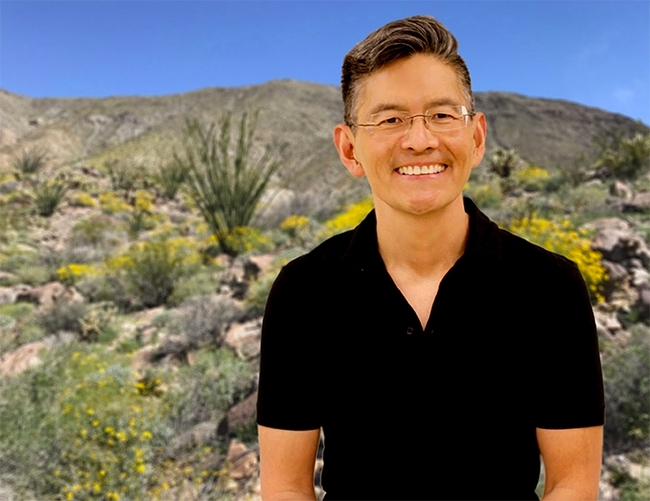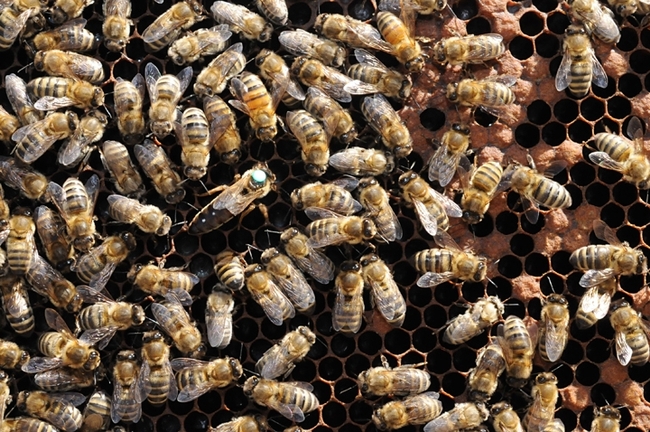
The next UC Davis Department of Entomology and Nematology seminar will feature professor James Nieh, a bee biologist in the Section of Ecology, Behavior, and Evolution, Division of Biological Sciences, UC San Diego and associate dean in the Division of Biological Sciences.
He'll speak on "Danger, Dopamine, and Dance: New Insights from the Magic Well of Honey Bee Communication" at 4:10 p.m., Monday, Dec. 4 in Room 122 of Briggs Hall. The seminar also will be on Zoom. The Zoom link:https://ucdavis.zoom.us/j/95882849672
"Karl von Frisch referred to the waggle dance as the 'magic well' for the insights that it provides not only on honey bees, but on the general cognitive complexity that social insects are capable of," Nieh writes in his abstract. "New research demonstrates that the neurotransmitter, dopamine, the 'pleasure molecule' plays a similar hedonic role in honey bees as it does in many vertebrates, regulating the perception of danger and the anticipation of food rewards as revealed in the excitatory waggle dance and the associated, inhibitory stop signal. I will also discuss new data showing that the honey bee waggle dance is partially learned and has elements that may be culturally transmitted. Together, these findings, demonstrate that the waggle dance can teach us a great deal about shared cognitive mechanisms and the importance of social learning across taxa."
In an article titled "Unlocking Secrets of the Honeybee Dance Language--Bees Learn and Culturally Transmit Their Communication Skills," and published March 9, 2023 in The Conversation, Nieh described the waggle dance as "one of the most complicated examples of nonhuman communication. They can tell each other were to find resources such as food, water, or nest sites with a physical 'waggle dance.' this dance conveys the This dance conveys the direction, distance and quality of a resource to the bee's nestmates."
Nieh related exactly how the bees perform the waggle dance. "Essentially, the dancer points recruits in the correct direction and tells them how far to go by repeatedly circling around in a figure eight pattern centered around a waggle run, in which the bee waggles its abdomen as it moves forward. Dancers are pursued by potential recruits, bees that closely follow the dancer, to learn where to go to find the communicated resource."
"Longer waggle runs communicate greater distances," Nieh wrote, "and the waggle angle communicates direction. For higher-quality resources such as sweeter nectar, dancers repeat the waggle run more times and race back faster after each waggle run."
Nieh noted that "The Greek historian Herodotus reported over 2,000 years ago on a misguided forbidden experiment in which two children were prevented from hearing human speech so that a king could discover the true, unlearned language of human beings.
"Scientists now know that human language requires social learning and interaction with other people, a property shared with multiple animal languages. But why should humans and other animals need to learn a language instead of being born with this knowledge, like many other animal species?"
Nieh went on to point out that "This question fascinates me and my colleagues and is the basis for our recent paper published in the journal Science. As a biologist, I have spent decades studying honeybee communication and how it may have evolved."
Nieh received his bachelor's degree from Harvard University in 1991 and his doctorate from Cornell University in 1997. He completed a postdoctoral fellowship funded by NSF-NAT0 (National Science Foundation, North Atlantic Treaty Organization) at the University of Würzburg, Germany. He served as a Harvard Junior Fellow from 1998-2000
Seminar coordinator is Brian Johnson, associate professor, UC Davis Department of Entomology and Nematology. For Zoom technical issues, he may be reached at brnjohnson@ucdavis.edu. The list of seminars is posted here.
Resources:
- Social Signal Learning of the Waggle Dance in Honey Bees, March 9, 2023, Science
- Bees Can Teach Their Young to Dance, March 9, 2023, Washington Post
- The Waggle Dance, PBS documentary on YouTube
Attached Images:
